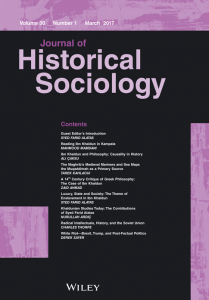Introducing the Facet Methodology
(An alternative to mixed methods especially within the sociology of digital technology)
Mixed methods in practice usually involves using quantitative and qualitative methods to allow researchers to cross-reference corroborating sources of data as they add layers of credibility to their studies (Creswell 2003). Mason’s facet methodology (Mason 2011) is an alternative to this “methods-driven integration or triangulation” of data that can characterise mixed methods “where methods and their products are fitted together in a predetermined or hierarchical way” (p84). The facet methodology “requires a blend of scientific and artistic or artful thinking, involving not only deductive but also imaginative, inventive, creative and intuitive reasoning” (p80). The facet is a metaphor for a mixed, yet more sophisticated and multi-dimensional methodology.
The facets in the gemstone:
“Are conceived as different methodological-substantive planes and surfaces, which are designed to be capable of casting and refracting light in a variety of ways that help to define the overall object of concern”(p77).
The facet methodology assumes;
“That the world and what we seek to understand about it is not only lived and experienced, but is multi-dimensional, contingent, relationally implicated and entwined”. (P78)
This is especially applicable to the study of digital technology. Digital technology is not an external to our social world; it is a multi-faceted “contingent, relationally implicated and entwined” presence in or lives. We use digital technology for different motivations, at different times of the day, on different devices, and in a complex interrelationship between our personal circumstances and developments in technology, our patterns of usage continuously evolve. The relationship between us and digital technology can be what Mason calls, an“entwined problematic”(p83) that lends itself to the facet methodology.
The facet methodology is particularly useful in helping resolve the tension between micro and macro phenomenon inherent in many studies involving large data sets such as online social networks. The facet methodology assumes the “different registers of scale that social scientists sometimes like to apply analytically” (p79) are not always self-evidently revealed.
As corrective to this mode of discussion, facets are:
“Mini investigations that involve clusters of methods focussed on strategically and artfully selected sets of related questions and problematics. Each facet represents a way or ways of looking at and investigating something that is theoretically interesting in relation to the overall enquiry and each seeks out particular instances or versions of the kinds of entwinements and contingencies that are thought to be characteristic of the object of concern in some way.” (P79)
The facet methodology is also “ontologically and epistemologically orientated” (p83). This means that it is “implicated in all stages of research, including how we theorise from or with data” (p83). The resultant processes of writing, representation and argumentation are “driven by ideas about how different facets, and facets in combination, can tell us about the entwined problematic” (p83). It encourages the researcher to examine think laterally and critically about the data. The facet methodology can reveal how macro phenomena are not immediately self-evident but subtlety entwined and mobilised in different contexts in sometimes counter-intuitive ways.
Creswell, J.W., 2003. Research Design 2nd ed., Thousand Oaks, CA: Sage Publications, Inc.
Mason, J., 2011. Facet Methodology : the case for an inventive research orientation. Methodological Innovations Online, 6(3), pp.75–92.






